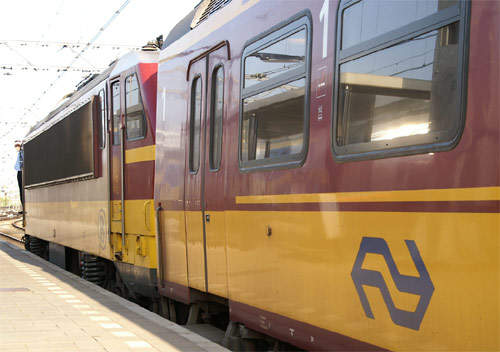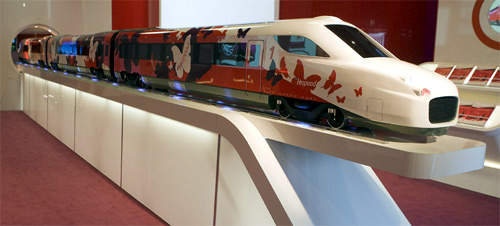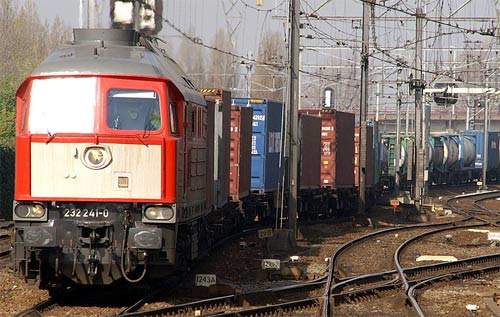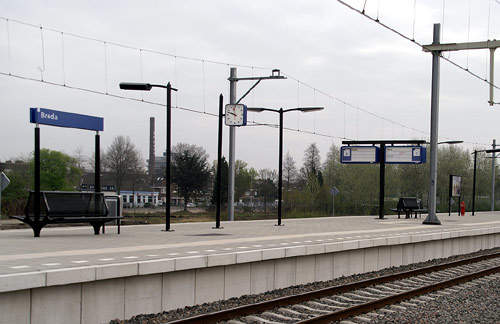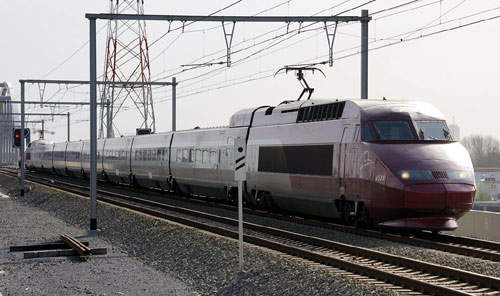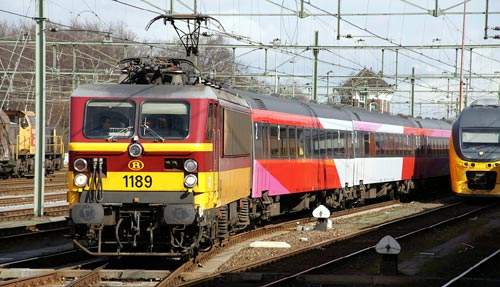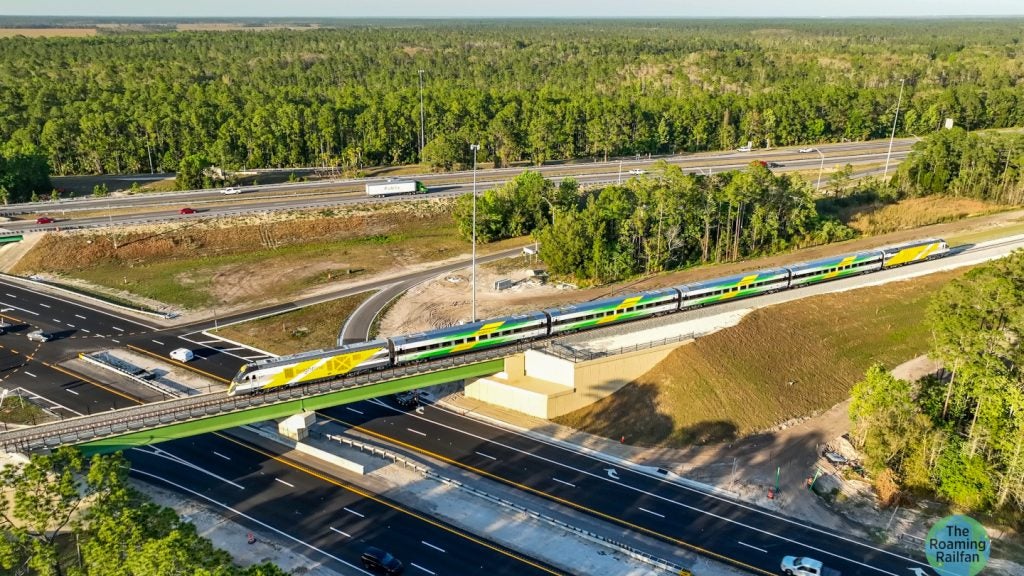HSL Zuid (High-Speed Line South) is a dedicated 125km (78 mile) high-speed rail line, forming part of a new route between Belgium and the Netherlands. The line is a key part of the growing European high-speed rail network, accommodating several routes.
The project was approved in 1997, with the route finalised in 1998 and construction beginning in 2000. It opened in September 2009 after a delay of two years.
The service connects Amsterdam to Brussels, via Schiphol, Rotterdam and Breda, and offers travellers a high degree of flexibility. It is possible to reserve a ticket right up to the last minute and still be sure of getting a seat.
At 2006 prices, projects cost of the line was €6.9bn.
The project
The Netherlands was suffering acutely from growing infrastructure demands, notably in the western Randstad conurbation through which HSL Zuid passes. It was already suffering from congestion at its major airport, Amsterdam Schiphol, a major hub between European centres and worldwide destinations.
The 10% involvement of Dutch flag carrier airline KLM (now part of Air France) in partnership with Nederlandse Spoorwegen (NS) as service operators HSA, operating as NS Hispeed, is illustrative of integration of the project with other transport modes, as is the building of extensive car parking near the stations involved.
NS Hispeed projected time reductions from Amsterdam: to Rotterdam, from 1hr 3min to 36min; to Brussels, from 2hr 54min to 1hr 46min; and to Paris from 4hr 9min to 3hr 13min.
The line to the Belgian border was financed through a public-private partnership scheme led by the Infraspeed BV consortium. It will remain the property of the Dutch government, which will pay an annual performance fee of around NLG230m in return for over 99% availability. The contract covers a four-year construction period and maintenance up to 2030.
Infraspeed consists of Fluor Daniel, BAM/NBM, Siemens, Innisfree and Charterhouse Project Equity Investment. The banking consortium is led by Bayerische Hypo-und Vereinsbank, ING, KBC, KfW, Dexia Public Finance Bank and Rabobank.
A limited service on HSL 4 between Amsterdam and Rotterdam became operational with rented TRAXX locomotives. It is expected that by December 2010, V250 trains will be operating up to Den Haag, Breda, Antwerp and Brussels.
Thalys, an international high-speed train began operating on the high-speed rail line between Paris and Brussels in December 2009. It currently travels seven times a day, but this frequency is expected to increase to ten times a day by the end of 2010.
The addition of high-speed services has caused capacity problems at Schiphol Airport station. As a solution to the problem, NS Amsterdam services have been restored to their original routing via Haarlem.
Infrastructure
Although European rules stated that new high-speed rail lines were to be designed for speeds of at least 250km/h (155mph), the Dutch line was constructed for 300km/h (186mph) running. Unlike the rest of NS electrified routes at 1,500V DC, HSL Zuid and its Belgian counterpart features a 25kV AC supply.
Major engineering features include the new 7.2km (4.5 miles) Leiderdorp-Hazerswoude tunnel under the Groene Haart. Construction problems at this site contributed to the delay of the project overall.
Work started on the Leiderdorp-Hazerswoude tunnel in October 2001 using the world’s largest boring machine. It is known as Aurora, is 120m long, 14.87m in diameter and weighs 3,300t.
Other major structures include a 6km (3.7 mile) viaduct at Bleiswijk, near Rotterdam, nine-track covered way at Barendrecht to be shared with the new Betuwe freight line and conventional trains and two immersed tube tunnels under waterways near Dordrecht.
The Hollandsch Diep waterway is bridged by a structure 2km long, including access ramps. To contain environmental effects, the line is bundled with motorway alignments for 33km (20.5 miles). Of the total route length, 75% in over construction works, the remainder at ground level with extensive use of transparent noise screening.
The Dutch administrative capital, Den Haag, is also directly connected to the route via existing track at Rotterdam. Breda is effectively as a terminus, served by north and south spurs that form a triangle with the HSL proper, with a new platform added at the station.
The HSL Zuid design team was briefed to come up with a design that fitted well into the Dutch landscape, yet at the same time look innovative. A “double U” trackbed design has bben chosen, whereby each pair of rails is built into a U-shaped concrete bed.
Rolling stock
The projected HSL services feature several forms of motive power. New V250 trains made up of two coupled ‘half-sets’ from Ansaldobreda SpA of Italy and operated as a pool by owners NS and SNCF/NMBS will provide internal Dutch services as far south as Breda, also between Amsterdam and Brussels Midi.
By late 2007 it had become clear that the V250 delays would continue as the first set was only then approaching completion.
It was planned to replace the long-established Benelux service (now marketed by Hispeed as InterCity Brussels) using the classic route via Roosendaal, although high demand and concerns about enforced higher charges for trains over the new lines lead to their retention in some form.
TGV-based Thalys stock which already serves Amsterdam is now fitted with signalling compatible with HSL Zuid and internally refurbished for services to Belgium and France. German and Dutch ICE3 sets on the Amsterdam-Köln line are now promoted as part of NS Hispeed operations.
The V250 service has been designed to run at a top speed of 300km/h. It is presently operating at a speed of 160km/h between Antwerp and Brussels, after which it runs at full speed up to Paris. This has reduced the travel time between Amsterdam to Paris by 51 minutes.
Signalling and communications
Signalling standards will conform to the standard European Rail Traffic Management System (ERTMS). It incorporates a high-speed communication link between trackside and train, enabling continuous transmission of information from interlocking and traffic management systems directly into train cabs.
Lineside and in-cab signalling controls movement, and a form of automatic train protection has been fitted to trains operating on the line. Evacuation paths are in place along the entire route, with emergency exits in track screens, on bridges and in tunnels to assist rapid evacuation. To further enhance safety there are no level crossings, with bridges built to take existing roads over the new rail line.
The future
The new line is clearing free paths on the classic route that could increase north-south freight capacity. At the project outset, the expected annual number of high-speed train passengers was assumed to be 14 million, but NS Hispeed expects up to 17 million domestic and seven million international passengers annually from 2010.

